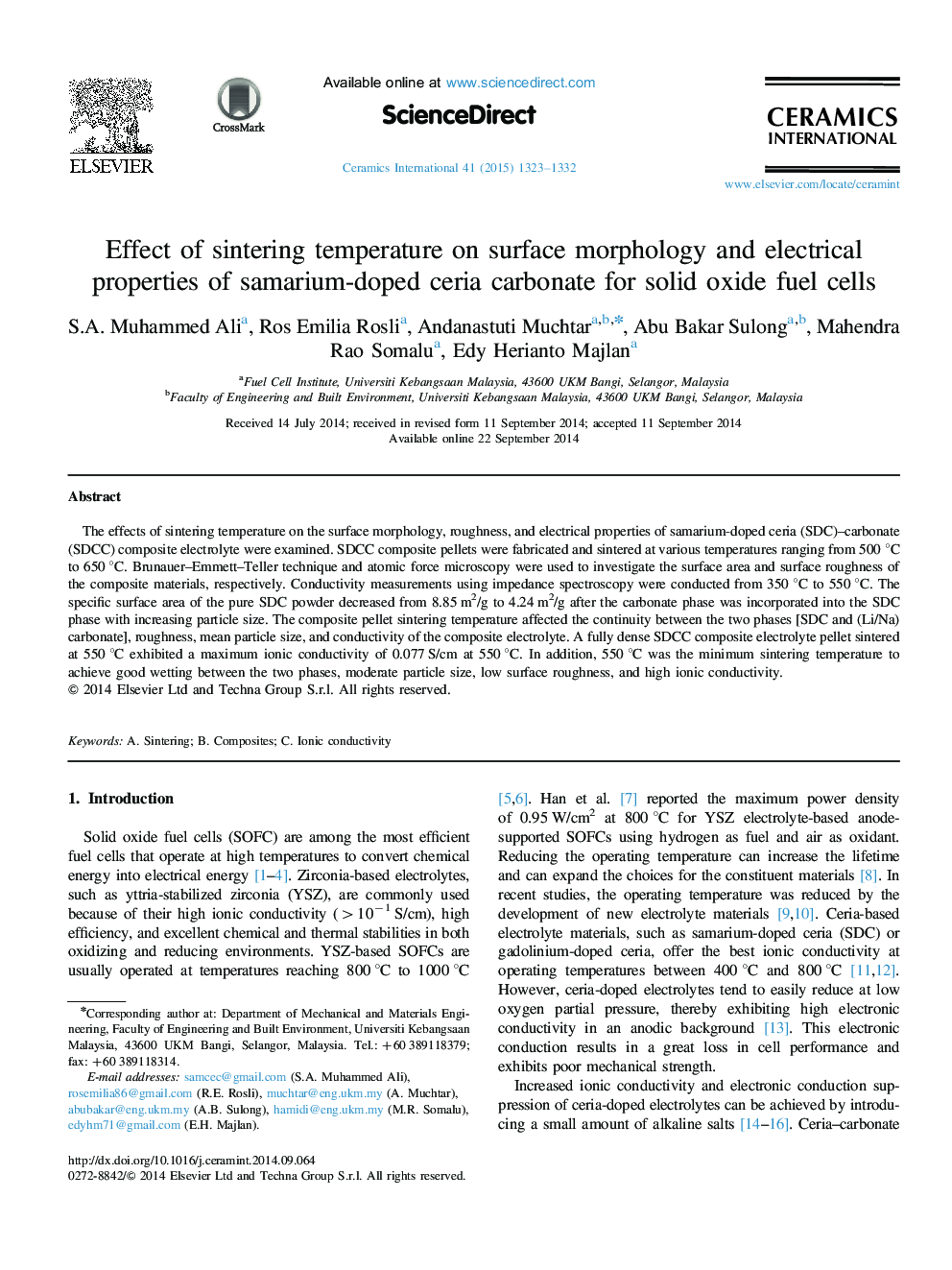| Article ID | Journal | Published Year | Pages | File Type |
|---|---|---|---|---|
| 1460833 | Ceramics International | 2015 | 10 Pages |
The effects of sintering temperature on the surface morphology, roughness, and electrical properties of samarium-doped ceria (SDC)–carbonate (SDCC) composite electrolyte were examined. SDCC composite pellets were fabricated and sintered at various temperatures ranging from 500 °C to 650 °C. Brunauer–Emmett–Teller technique and atomic force microscopy were used to investigate the surface area and surface roughness of the composite materials, respectively. Conductivity measurements using impedance spectroscopy were conducted from 350 °C to 550 °C. The specific surface area of the pure SDC powder decreased from 8.85 m2/g to 4.24 m2/g after the carbonate phase was incorporated into the SDC phase with increasing particle size. The composite pellet sintering temperature affected the continuity between the two phases [SDC and (Li/Na) carbonate], roughness, mean particle size, and conductivity of the composite electrolyte. A fully dense SDCC composite electrolyte pellet sintered at 550 °C exhibited a maximum ionic conductivity of 0.077 S/cm at 550 °C. In addition, 550 °C was the minimum sintering temperature to achieve good wetting between the two phases, moderate particle size, low surface roughness, and high ionic conductivity.
